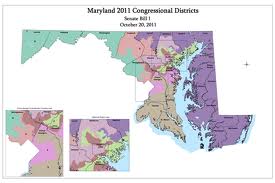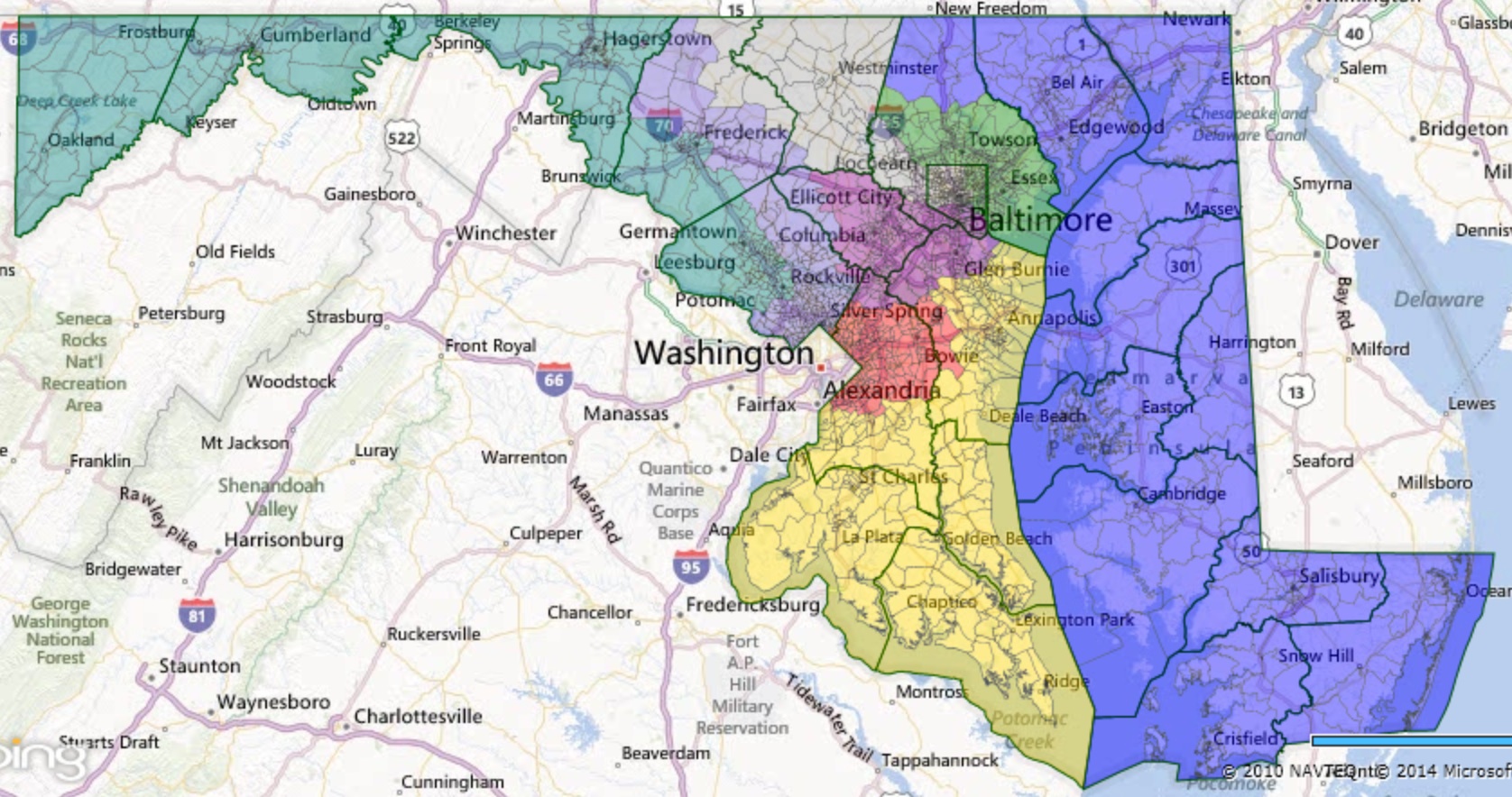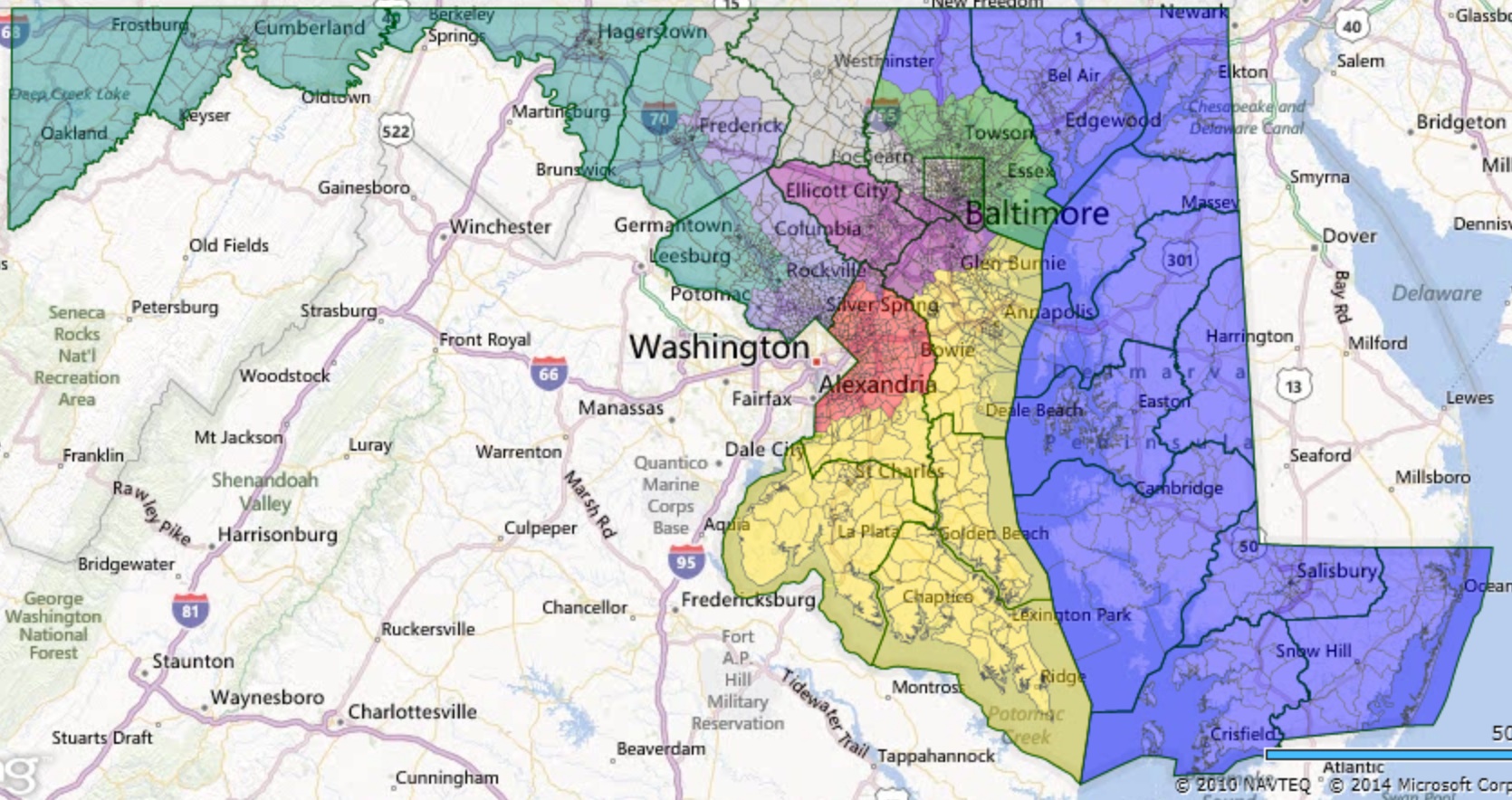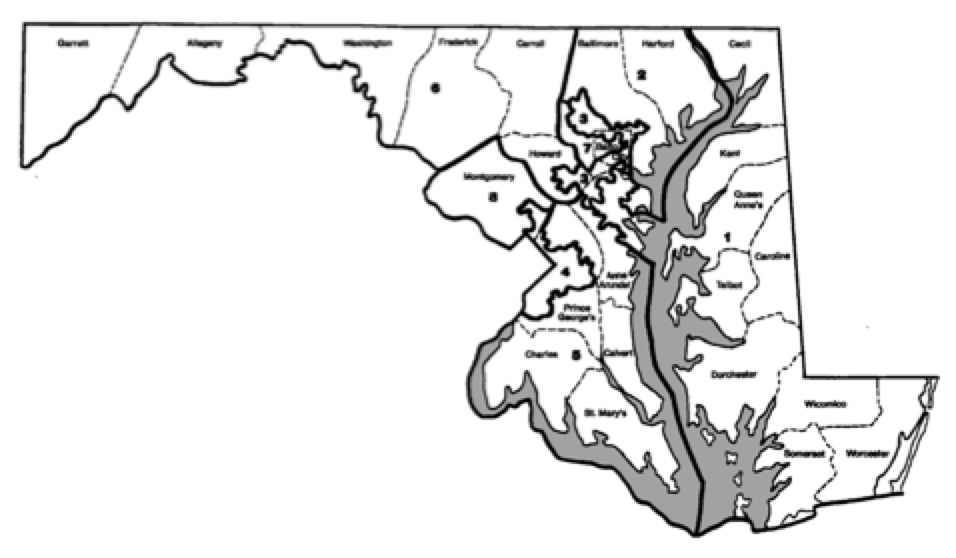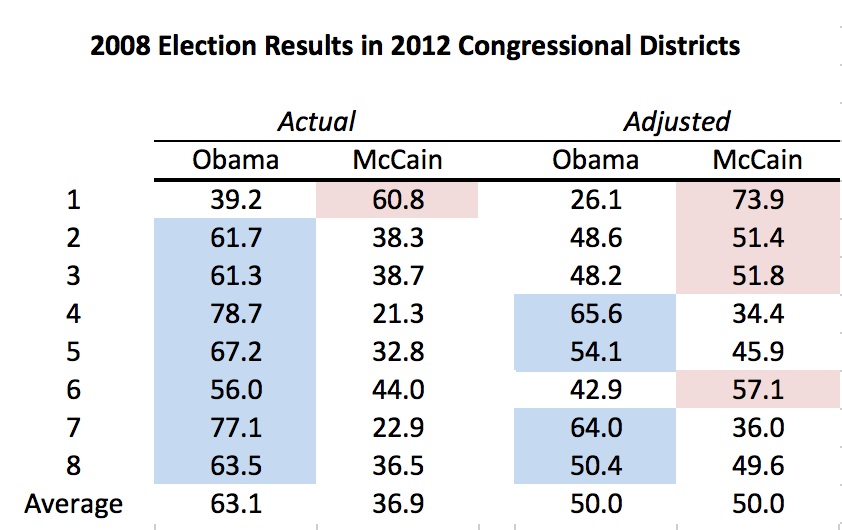When people refer to geographical compactness, they refer to districts of sensible shape. Why does this matter? First, odd shapes can indicate gerrymandering. Second, the idea of single-member districts is grounded in the representation of territorially organized communities where each area has its representative, though many dispute this idea of community.
One common compactness measure, usually referenced as the Reock or Dispersion measure, is the ratio of the area of a district to the area of the smallest circle that can enclose the district:
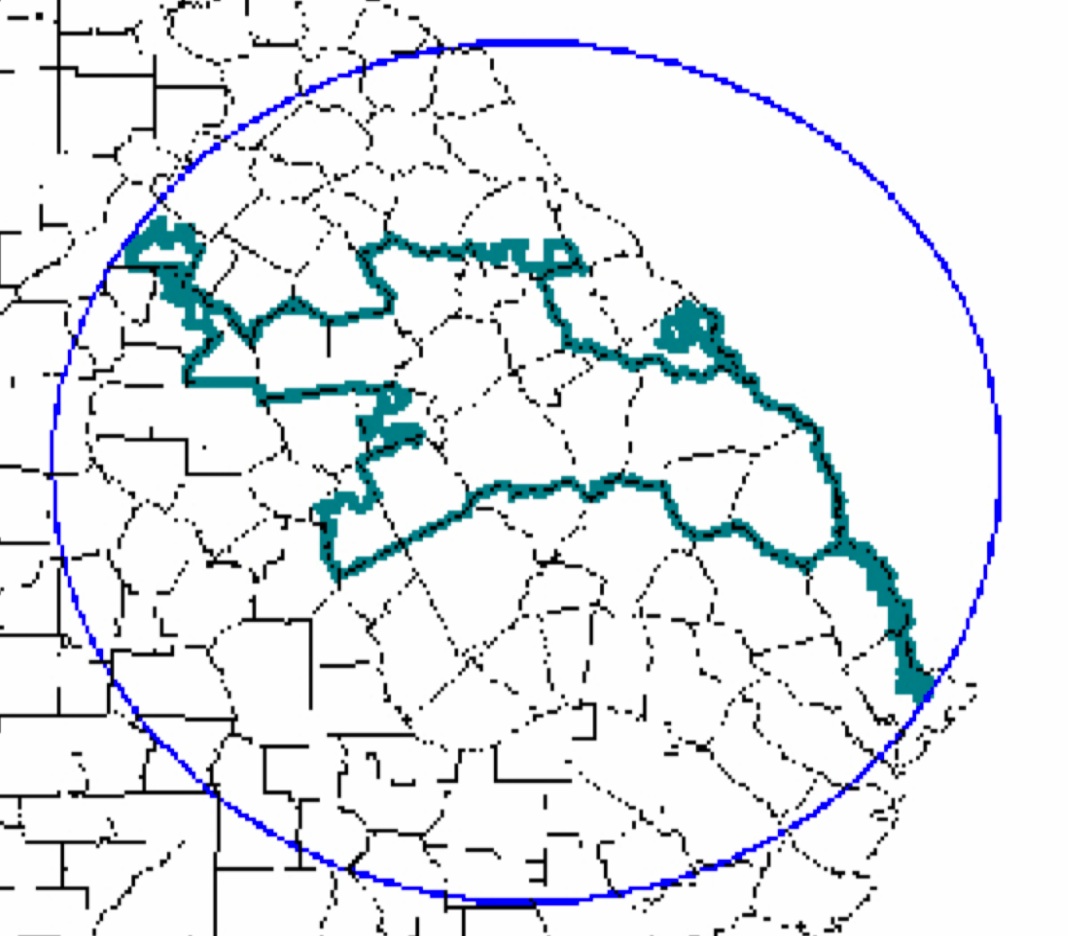
Reock or Dispersion Measure of Compactness
The idea behind the measure is that a circle is the most compact shape, so it compares the district to the smallest circle that can encompass it. As the name indicates, it is viewed as a good measure of the dispersion of the area of a district.
Another widely used compactness measure is the ratio of the area of a district to the area of a circle with the same perimeter as the district (the Polsby-Popper or Perimeter measure):
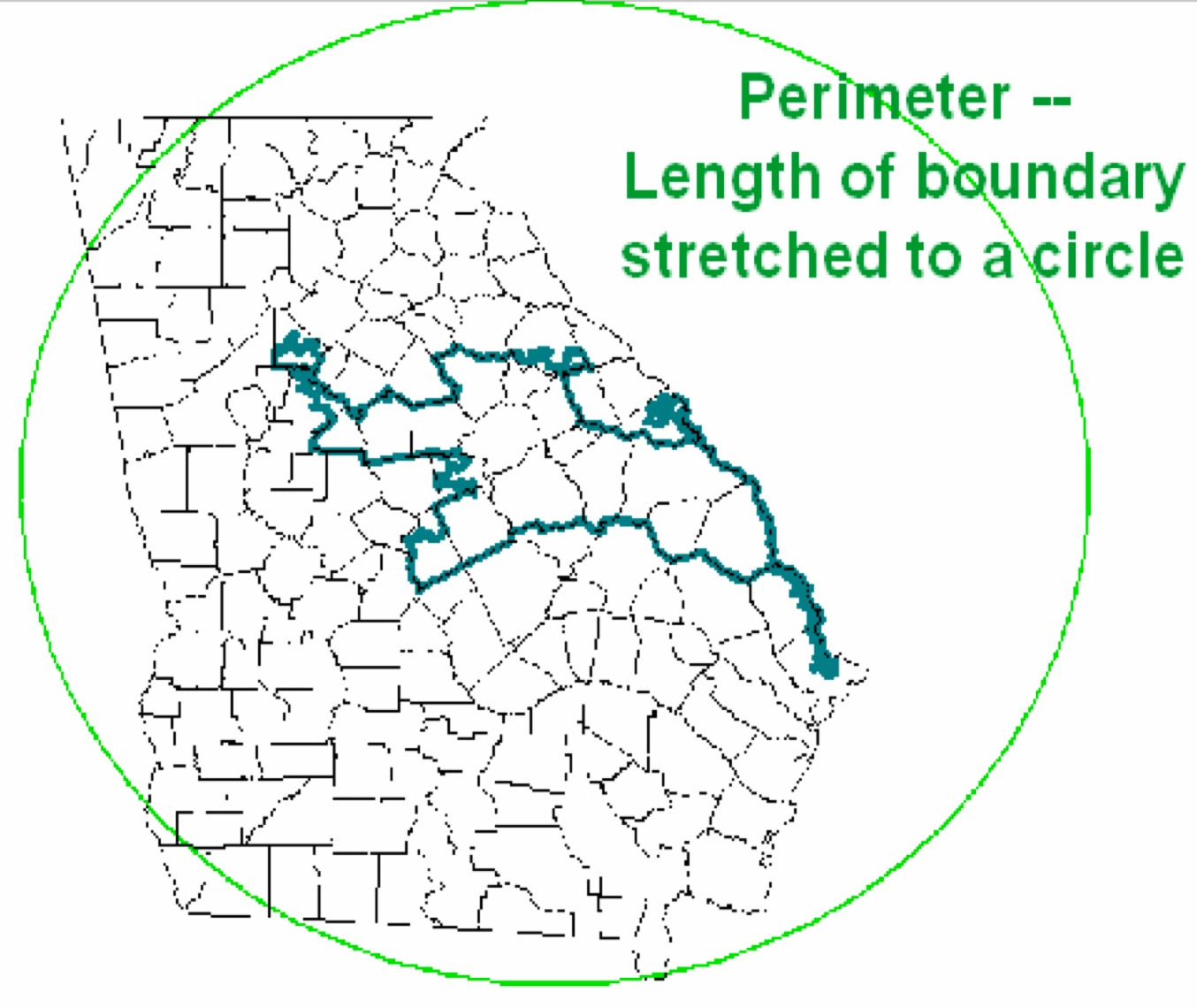
Polsby-Popper or Perimeter Measure
This measure tends to give low (i.e. worse) scores to districts with many crinkles in their boundaries and that are elongated in ways that stretch their boundaries but encompass little territory. In contrast, districts with smooth boundaries that maximize the area enclosed score well.
Complaints about both measures include that one cannot draw only circular districts and that state boundaries are not circular. For this reason, it is important to compare district scores to other districts and especially other plans for districts in the same state.
A final compactness measure is the Grofman Interocular Test. Developed by my humorous friend and sometime coauthor, Bernie Grofman, it’s his way of asking does “evidence of gerrymandering leap up and hit you in the eyeballs.” Rather like Justice Stewart said about pornography, gerrymandeirng can be hard to define but you know it when you see it.
Closely related to compactness are the ideas of contiguity and adherence to administrative boundaries. Contiguity is simply that one could, at least in theory, travel from any point in a district to any other point without leaving the district. A stricter version might require that one can travel in practice without having to cross into another district.
Federal law now requires that congressional districts be contiguous in the looser sense. In recent times, some districts have stretched the principle thinly with point contiguity, which is when districts remain connected at just one point.
Others value adherence to administrative boundaries, such as county and municipal lines, as helping preserve natural communities of interest. Of course, like districts, the boundaries of these units are drawn by people and not truly natural.
Maryland’s districts unquestionably fail any test for compactness. I’m including maps here of four of the eight districts to do the artistry of the plan full justice:
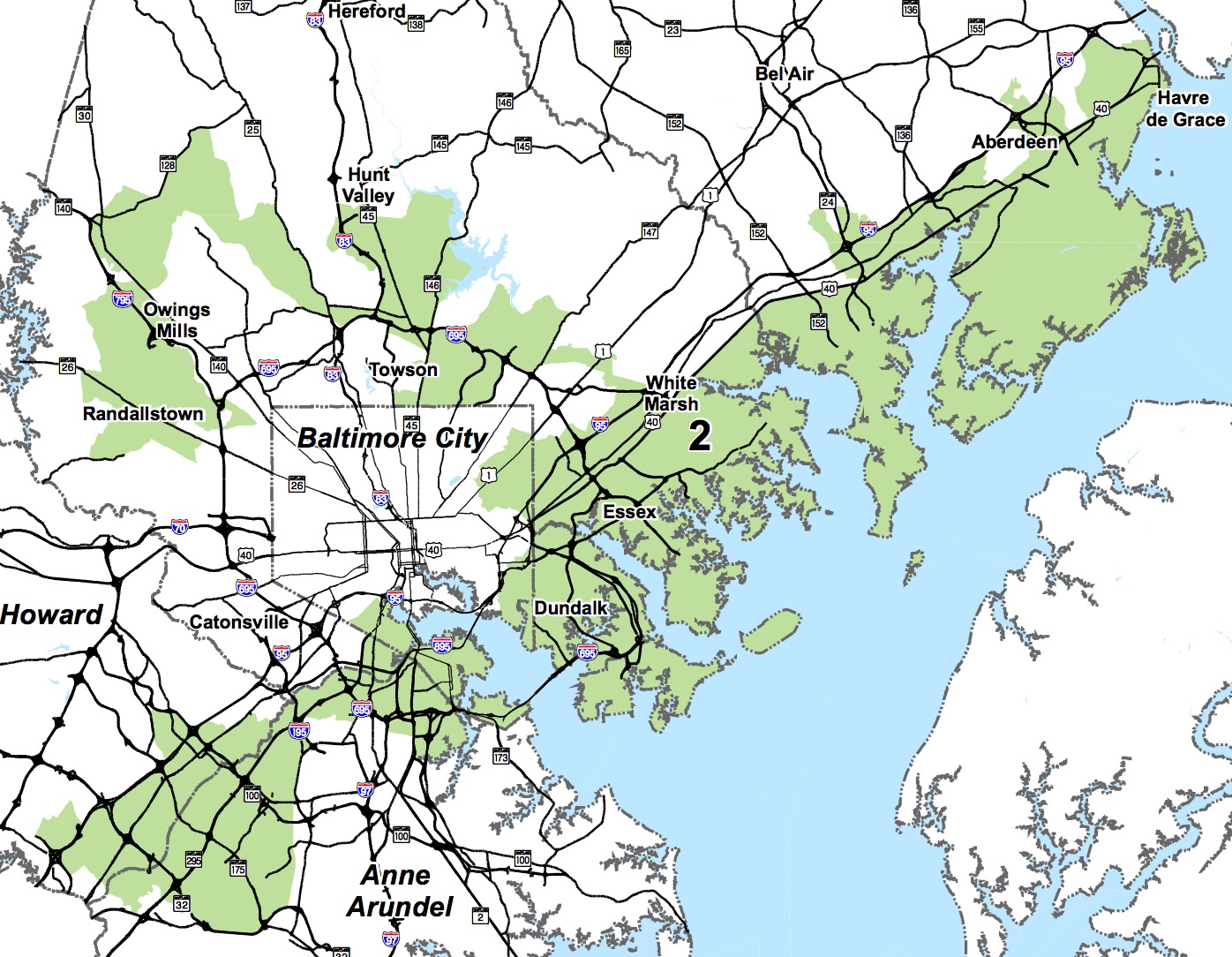 Maryland’s Second Congressional District
Maryland’s Second Congressional District
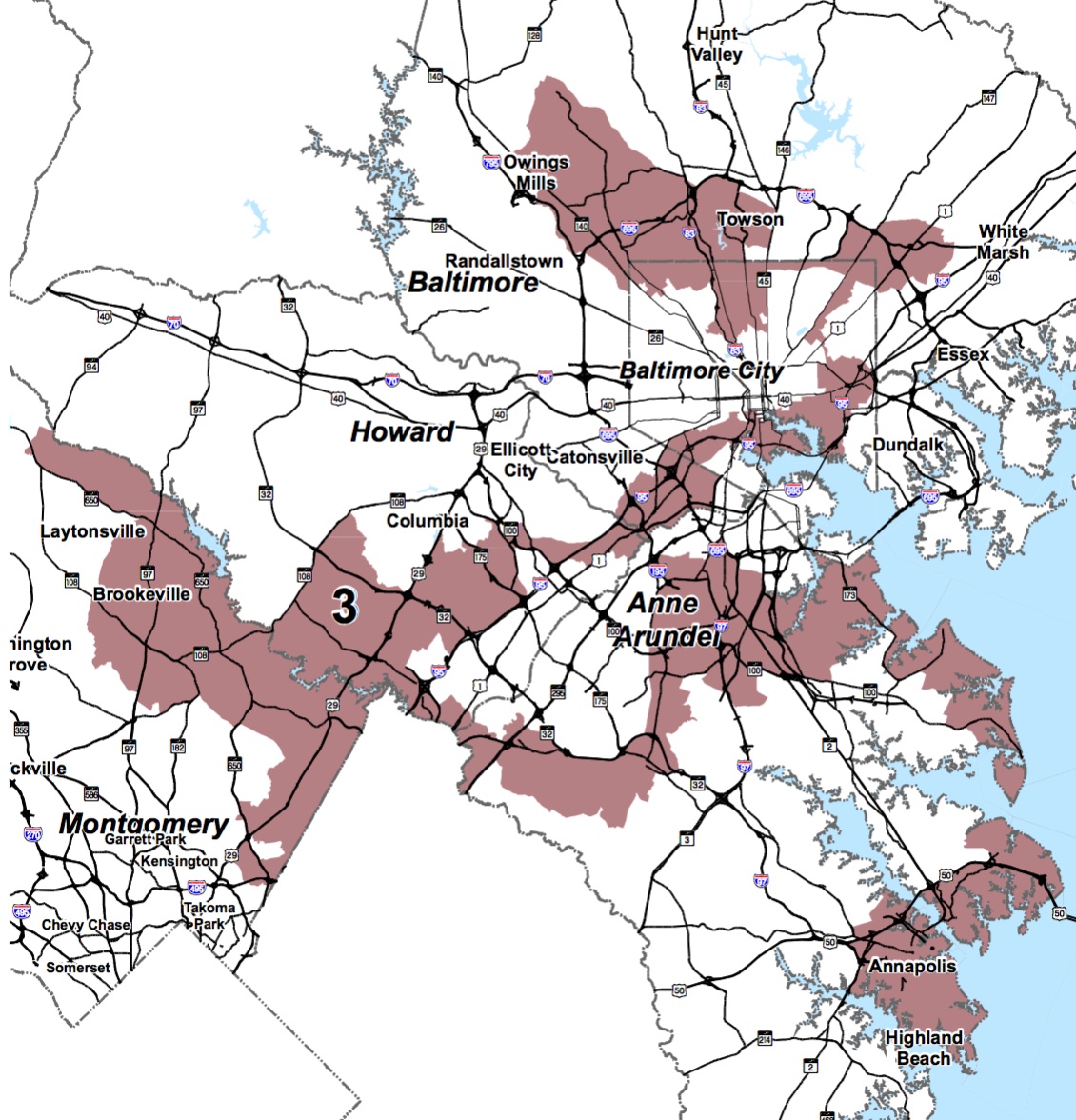 Maryland’s Third Congressional District
Maryland’s Third Congressional District
 Maryland’s Fourth Congressional District
Maryland’s Fourth Congressional District
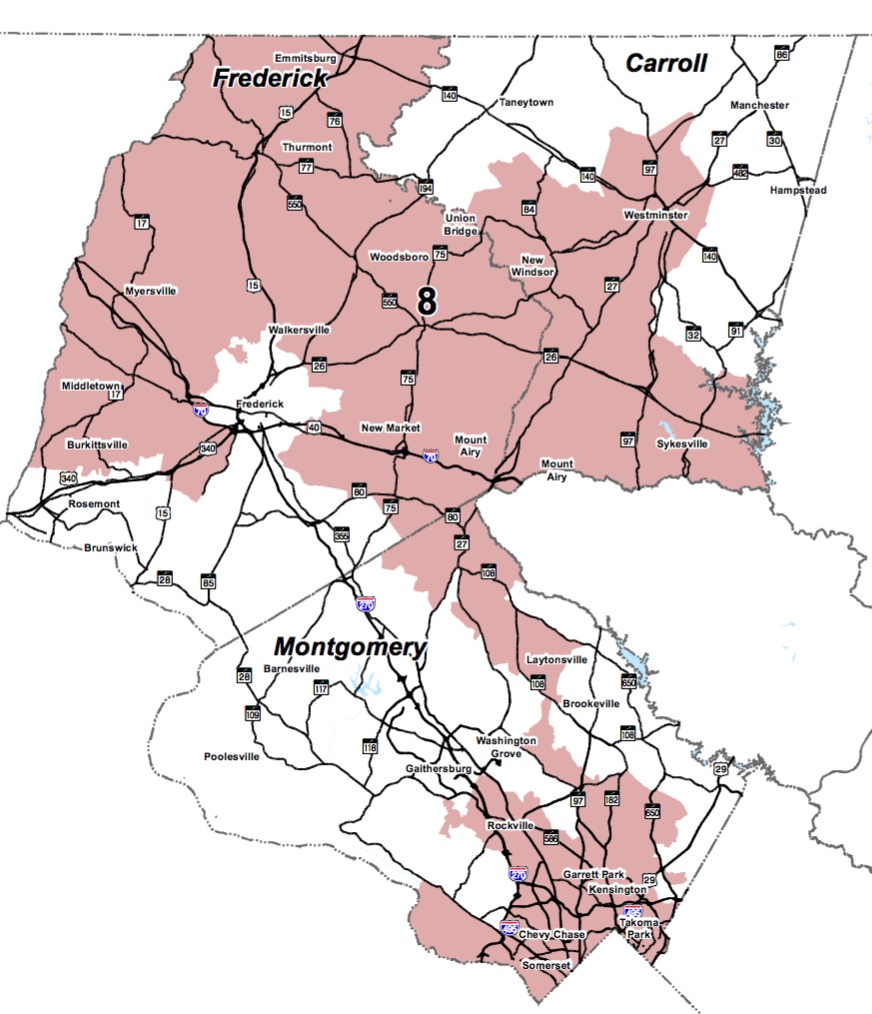 Maryland’s Eighth Congressional District
Maryland’s Eighth Congressional District
Maryland’s eight districts had the lowest average compactness score of any in the nation, according to both the Dispersion and Perimeter measures.
All four of the above districts are contiguous but very thinly at some points. The 8th has a small link south of Laytonsville to connect the very Democratic southern Montgomery with heavily Republican areas in Frederick and Carroll in a manner that benefits Democrats.
In order to let Rep. Steny Hoyer in the 5th keep areas he desired in northwest Prince George’s around College Park, the 4th skirts narrowly around the edges of Prince George’s and Anne Arundel. This corridor connects heavily black and Democratic areas in Prince George’s to very Republican parts of Anne Arundel. The overall district is a black-majority Democratic seat.
Some have claimed that the 3rd in the least compact district in the country. It certainly gives others a run for their money, as it snakes around the State to take in parts of four counties and Baltimore City. Narrow corridors connect three discrete sections of Baltimore City and County.
The district then meanders west to take in a contiguous chunk of south Howard and northeast Montgomery before arcing through Anne Arundel. It has to jump across water to maintain contiguity with Annapolis and at other points. Apparently, Rep. Sarbanes wanted to keep representing that city.
I think the 2nd may be my personal favorite. Narrow corridors allow it to take in separate portions of Baltimore County before crawling up the coast to take in the most Democratic portions of Howard. It then wanders into Baltimore City and cuts across the harbor on its way to Anne Arundel.
It’s easy to ascribe the non-compact shapes to partisanship. However, the shapes stem even more from the desire to satisfy certain Democratic incumbents–primarily Cummings, Hoyer, Ruppersberger, and Sarbanes–from the look of the map.
Several of these incumbents live close to each other in the Baltimore area even as population and political power has shifted away to other portions of the State. Baltimore City is now too small for even one congressional district. Yet it still has three.
In the next post, I examine why, just like among people, pretty isn’t always fair in redistricting.
 Del. Kris Valderrama, Candidate David Sloan and Del. Veronica Turner
Del. Kris Valderrama, Candidate David Sloan and Del. Veronica Turner
